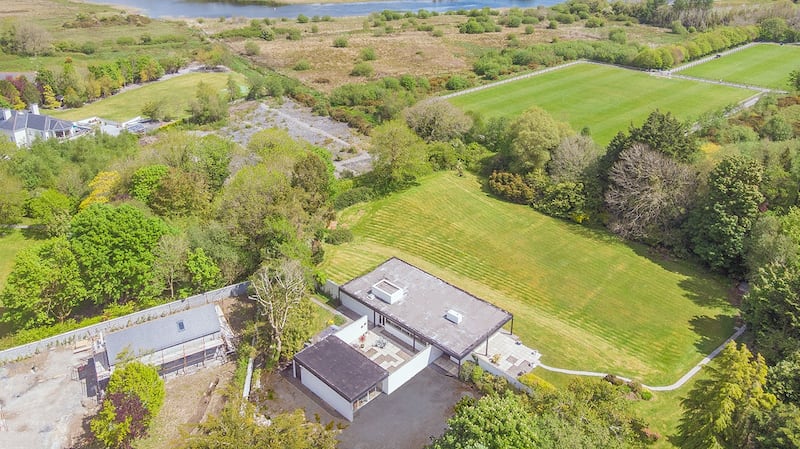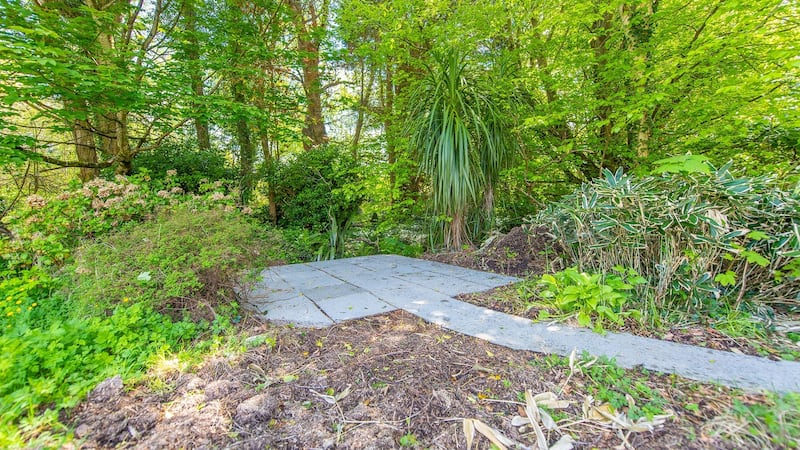In an obituary for the renowned architect Ronnie Tallon in this newspaper, in 2014, it was noted that he pioneered radical environmental engineering concepts and that his "approach to architecture was indebted... to the American works of the former Bauhaus director Ludwig Mies van der Rohe, one of the founders of the modern movement". It also notes that he "created a handful of glorious houses", and one of those rare gems, a family home in Dangan, close to Galway city, has just come on the market through DNG Maxwell Heaslip & Leonard, with an asking price of €1.2 million.
Tallon designed the house at Chestnut Lane in 1973/’74 for friends, one of whom worked very close by at NUIG; Tallon was a partner in the architectural firm Michael Scott and Partners that designed the university’s library and science buildings completed in 1973. (In 1975 the practice was renamed Scott Tallon Walker and it has maintained a long relationship with the university, completing its Human Biology building in 2018.)
Tallon, who in 1971 was awarded the Housing Medal by the Royal Institute of the Architects of Ireland for his own house in Foxrock, Dublin, was inspired by Mies van der Rohe’s German Pavilion, built as part of the 1929 International Exposition in Barcelona as a way to display the modern movement to the world. A temporary structure, it was demolished within a year (but rebuilt by a group of Catalan architects in 1983 from photographs and incomplete plans). Its influence on the Chestnut Lane house, while not as strong as on his own, is apparent in the seemingly-floating flat, cantilevered roof, the steel-framed structure supporting vast glass planes that frame views over the River Corrib over to Menlo Castle and across the playing fields of NUIG.
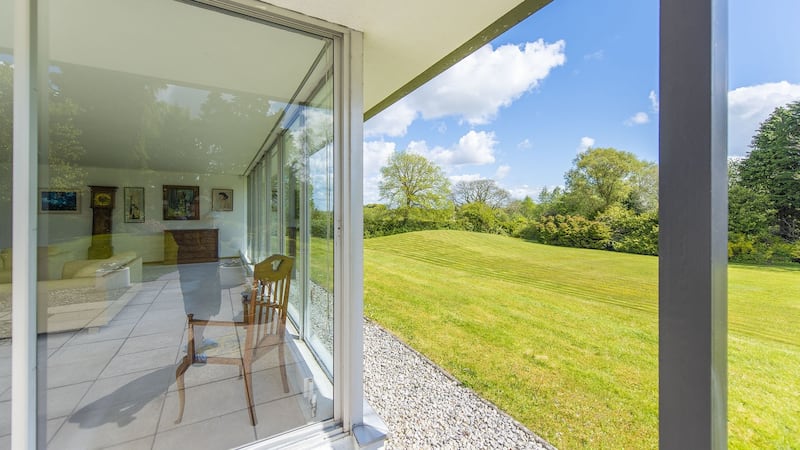
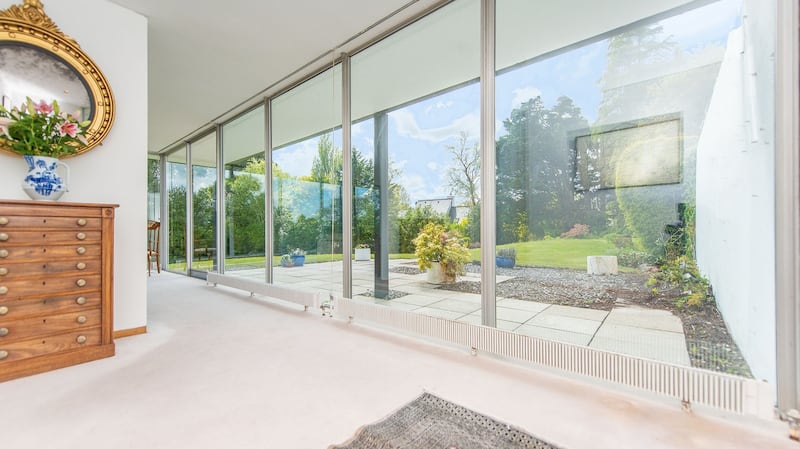
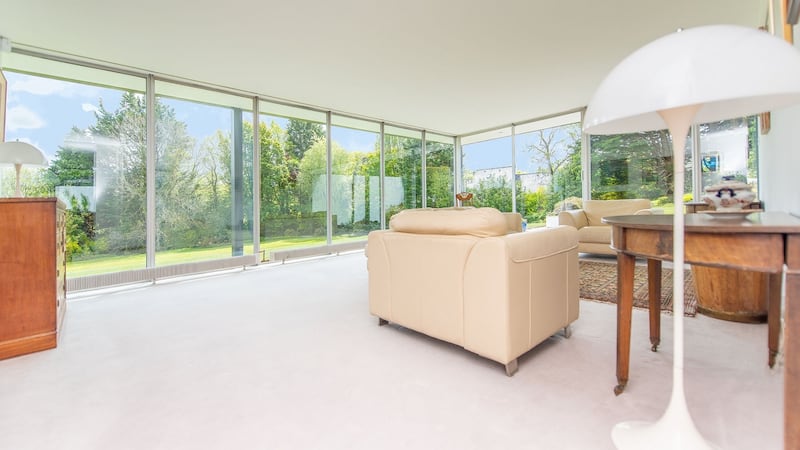
Set down a short lane, on almost two quiet acres of greenery with trees and grass running down to a stream where there is a little patio to catch evening sun, the late owners’ daughter describes it as a sanctuary; and yet, she continues, it is only minutes away from town, from college, and from the sea at Salthill.
Approached up the winding drive from the lane, double-front doors open into a bright, glassy hall, with a door to the diningroom on the left failing to distract the eye from two walls of floor-to-ceiling windows in the huge, airy livingroom. There is a plain fireplace in the solid wall, and at the corner some of the windows slide open to the wide courtyard that hugs the side of the house in a way that respects the plinth of Mies’s Pavilion. This gets the sun all day, says the owners’ daughter. “The whole house shines at this time of year.”
Back inside, a pocket door slides back to lead to the diningroom where there is a second chimney (new owners might open this to insert a stove). Windows – and glass double doors – along this wall overlook the walled courtyard, which is almost 74sq m (800sq ft), and the converted garage, which is 42sq m (450sq ft) has served many purposes including as a bedroom and a studio; it would make a good home office.
At the shorter end of the diningroom, there are two ways through to the rest of the house. To one side, a corridor acts as a spine, with three bedrooms on one side, and the family bathroom and main bedroom with ensuite on the other. There is a little “breakfast terrace” off this for a sheltered coffee at the start of the day.
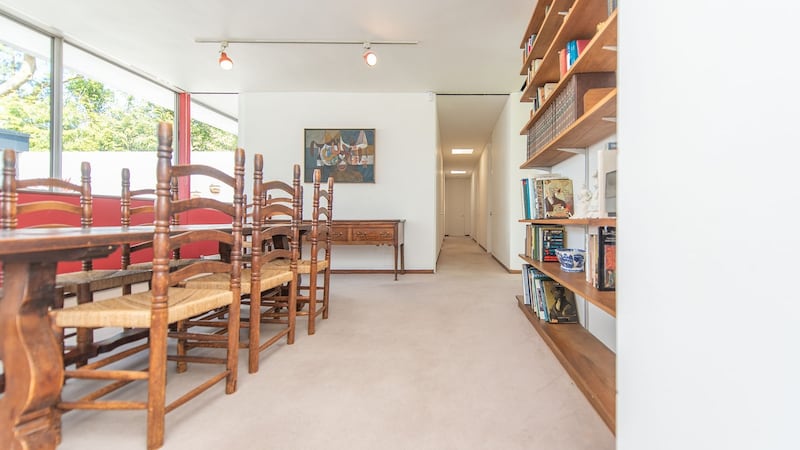
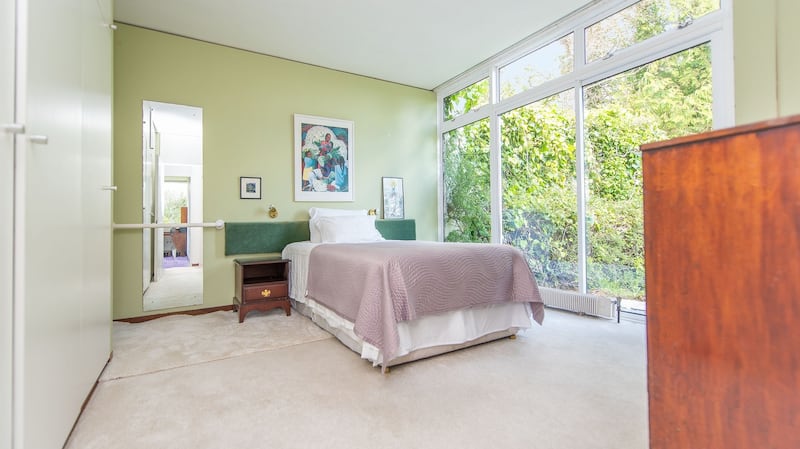
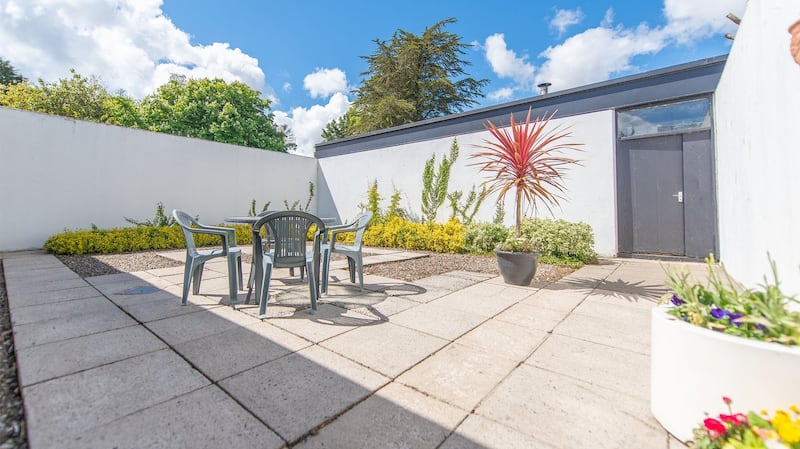
At the other side, the diningroom leads through another pocket door to the kitchen – fitted and functional but a little cut off – and a kind of lobby that opens to the courtyard. While getting the property ready for sale, the family found some of the original drawings and they were able to track the revisions to the design that their parents worked through with their architect friend; this part of the house seems to have had a few iterations and at one point it changed from a utility space to what their mother called a “dinette”, where they had casual meals. There is a wine cellar under the kitchen.
In addition to upgrading the house from its current BER of G, this would be a good place to focus a rethink of the space. New owners could consider, in consultation with an architect, enlarging the kitchen to a more open-plan arrangement by amalgamating it with the “dinette”; they could even, if the current 267sq m (2,874sq ft) accommodation does not quite fit their needs, consider extending the property, subject to planning permission.
One would hope Tallon would approve of such measures. Writing about the former headquarters of the Bank of Ireland (now the Department of Health) on Baggot Street, Frank McDonald said in this newspaper that “Ronnie Tallon is on record as saying that ‘good buildings can accept change. If you have a simple structure, I believe it can take expansion and it can take change without too much damage.’”
On Chestnut Lane, Tallon created a simple structure in a beautiful setting that makes a statement while being unobtrusive, and where new owners will be able to appreciate the simple things in life while still being close to its complications.
